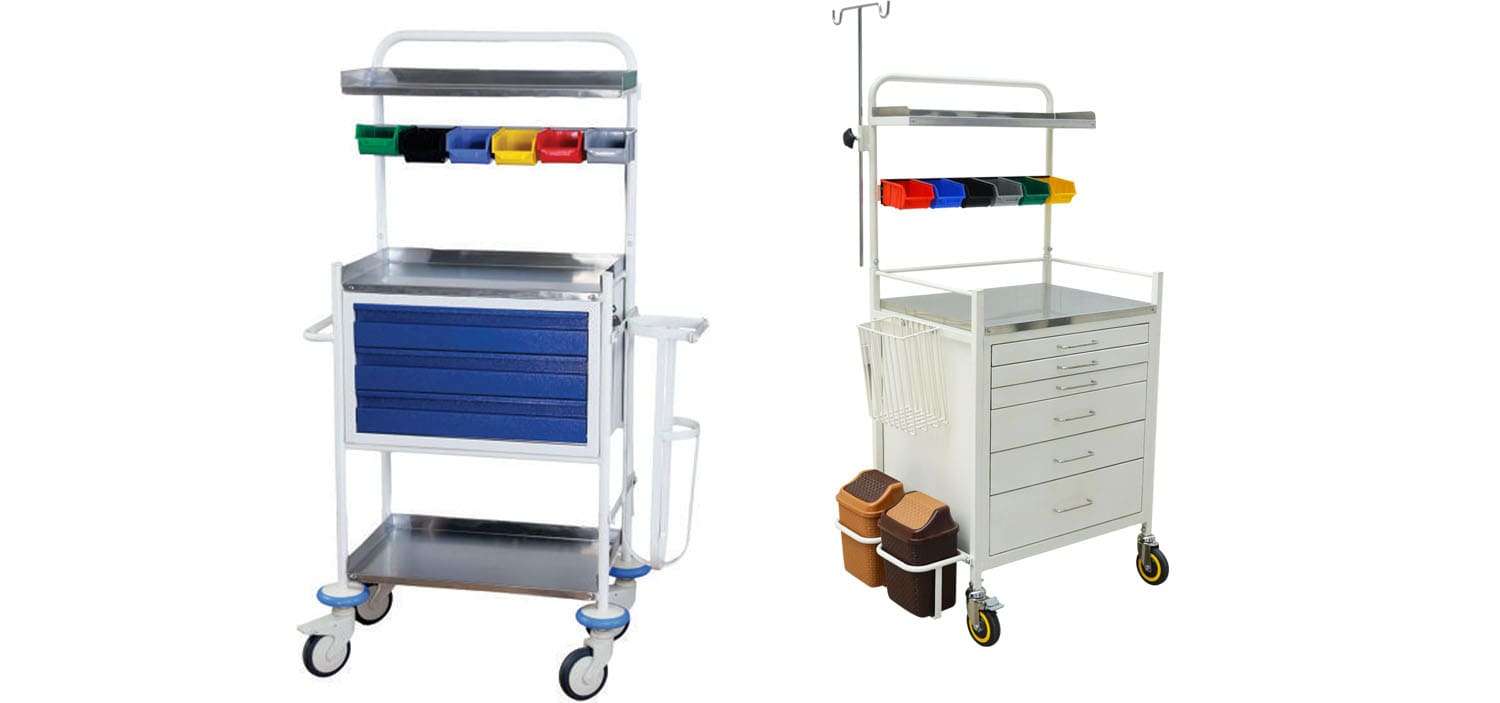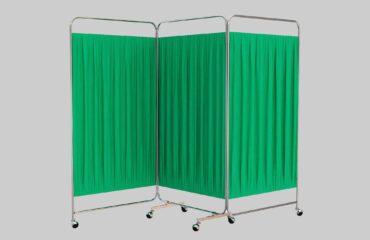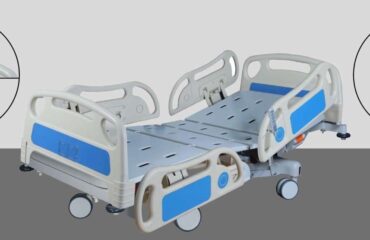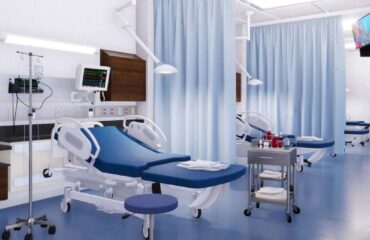A medical crash cart (also known as an emergency crash cart) is a wheeled set of drawers and trays used in hospitals and medical settings to quickly transport essential emergency equipment and medications to the location of a patient experiencing a life-threatening situation, such as cardiac arrest or respiratory failure. The cart contains tools and supplies necessary for resuscitation and lifesaving interventions.

Common items on a crash cart include:
- Medications: Epinephrine, atropine, amiodarone, vasopressors, and other drugs used in advanced cardiac life support (ACLS) or pediatric advanced life support (PALS).
- Airway equipment: Endotracheal tubes, laryngoscopes, bag-valve masks, and oxygen masks.
- Defibrillator: A device for delivering controlled electric shocks to the heart in cases of severe arrhythmias or cardiac arrest.
- IV supplies: Catheters, IV fluids, syringes, and tubing.
- Suction equipment: Suction catheters and portable suction devices to clear airways.
- Cardiac monitors: To track vital signs like heart rate, blood pressure, and oxygen levels.
- Miscellaneous tools: Gloves, scissors, tape, syringes, and needles.
Emergency crash cart are standardized and stocked in advance, allowing medical personnel to respond to emergencies quickly and efficiently. The layout of the cart is often uniform across facilities, so all staff members know where to find supplies in critical moments. Regular checks are done to ensure that all medications and equipment are functional and up-to-date.
Types of Medical Emergency Crash Carts?
Medical Emergency crash carts come in different types and configurations based on the specific needs of the hospital unit, patient population, and the types of emergencies they are meant to address. While the basic structure of a crash cart remains similar, the contents and design may vary depending on the intended use. Here are some common types of medical crash carts:
Adult Crash Cart
Purpose: Designed for adult patients in cases of cardiac arrest, respiratory failure, or other life-threatening situations.
Contents:
- Medications (ACLS drugs like epinephrine, amiodarone, atropine)
- Defibrillator
- Advanced airway supplies (endotracheal tubes, laryngoscopes)
- Intravenous (IV) fluids and access equipment
Use: Found in emergency departments, critical care units, and general hospital wards.
Pediatric Crash Cart
Purpose: Tailored for pediatric emergencies, focusing on the size and dosage requirements for children.
Contents:
- Pediatric-specific medications and dosages
- Smaller-sized airway equipment (pediatric laryngoscopes, endotracheal tubes)
- Pediatric defibrillator paddles
- Broselow tape (used to determine pediatric drug dosages based on the child’s height/weight)
Use: Pediatric hospitals, pediatric wards, and emergency departments.
Neonatal Crash Cart
Purpose: Specialized for newborns, particularly in the neonatal intensive care unit (NICU) or delivery rooms.
Contents:
- Neonatal medications and specific dosages
- Smaller airway equipment (neonatal bag-valve masks, endotracheal tubes)
- Umbilical catheters
- Warming devices for newborns
Use: Labor and delivery units, neonatal intensive care units (NICU).
Anesthesia Crash Cart
Purpose: Used in operating rooms for anesthesia-related emergencies such as airway obstruction or malignant hyperthermia.
Contents:
- Medications to manage anesthesia-related complications
- Airway management tools (laryngoscopes, tracheal tubes, ventilator supplies)
- Reversal agents for anesthetics
- Equipment to manage allergic reactions or malignant hyperthermia
Use: Operating rooms, post-anesthesia care units (PACUs).
Cardiac Crash Cart
Purpose: Focused on cardiac emergencies like heart attacks and arrhythmias.
Contents:
- Cardiac medications (nitroglycerin, aspirin, thrombolytics)
- Defibrillator and cardiac monitoring devices
- Advanced airway supplies
- Equipment for starting IV lines and administering drugs rapidly
Use: Cardiology departments, catheterization labs, critical care units.
Trauma Crash Cart
Purpose: Equipped for trauma patients, usually in emergency departments or trauma centers.
Contents:
- Trauma-specific tools (tourniquets, chest tubes, sutures)
- Blood products and transfusion equipment
- Medications for pain and shock
- Devices for rapid intubation and airway management
Use: Emergency rooms, trauma centers, urgent care.
OB/GYN Crash Cart
Purpose: Designed for obstetric and gynecological emergencies such as postpartum hemorrhage or eclampsia.
Contents:
- Medications for managing obstetric complications (oxytocin, magnesium sulfate)
- Emergency delivery equipment
- Tools for uterine and placental emergencies
- Neonatal resuscitation supplies (for emergencies during delivery)
Use: Labor and delivery units, OB/GYN clinics, and birthing centers.
Specialized or Procedure-Specific Crash Carts
Purpose: Tailored for specific medical or surgical procedures.
Examples:
- Malignant Hyperthermia Cart: Contains medications and cooling devices for the rapid treatment of malignant hyperthermia, a rare but life-threatening reaction to anesthesia.
- Code Blue Cart: A general crash cart used during “Code Blue” emergencies, equipped for various life-threatening situations, typically cardiac arrest.
- Stroke Cart: Prepared with clot-busting drugs (tPA), stroke scales, and equipment for rapid response to stroke emergencies.
Custom Crash Carts
Purpose: Built according to specific needs of a unit, such as outpatient clinics or specialized departments like dialysis centers.
Contents: Variable, depending on the patient population and likely emergencies.
Mobile/Portable Crash Cart
Purpose: Compact and lightweight, designed for rapid response in ambulatory or mobile health settings.
Contents: Essential medications, airway tools, portable oxygen tanks, and basic resuscitation equipment.
Use: Used in field settings, mobile clinics, and for patient transport in hospitals.
Pharmacy Code Cart
Purpose: Specialized for the storage and dispensing of life-saving medications during an emergency.
Contents: Medications organized by color-coded drawers for quick access, often restocked by pharmacists.
Use: Found in pharmacies and areas of the hospital where emergency medications are stored.
Each medical crash cart is configured based on the anticipated emergencies and patient demographic of the particular unit or hospital department. Regular checks and standardized organization of these carts ensure healthcare professionals have immediate access to the tools they need in life-threatening situations.


